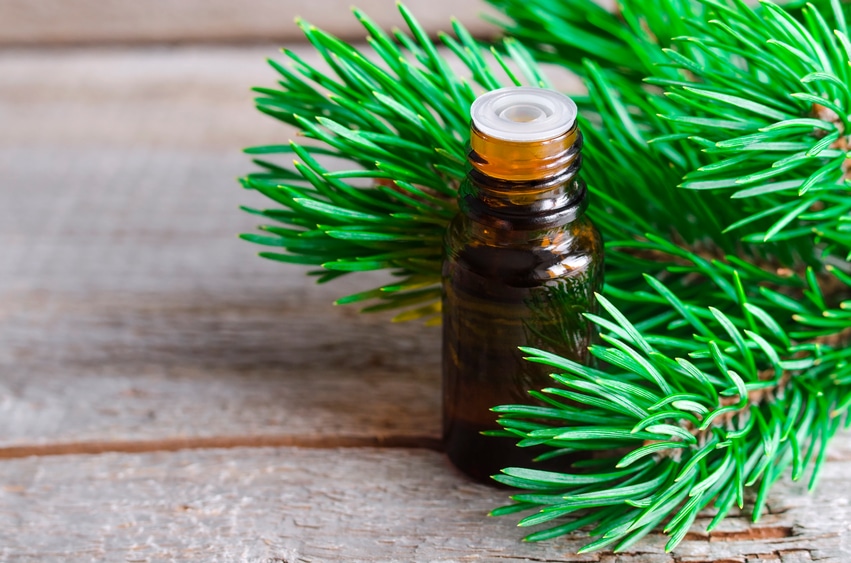
A yeast infection is a condition that prevails when an enormous number of yeast cells grow within the vagina. This is one of the most popular causes of vaginal discharge for most women across the globe.
Although the condition is irritating and highly uncomfortable, it is typically not serious, and it can be managed. It is a common problem for women. Most women remain unaware or simply ignorant of this medical predicament.
Table of contents
However, it is imperative to know the causes, triggering factors, symptoms, and any related conditions. Most importantly, you need to learn about the essential oils for yeast infection.
Types of Yeast Infection
Yeast Vaginitis
This is an infection caused by fungi of the genus Candida, particularly Candida albicans. At some point in life, a woman has to experience vaginitis. Basically, this is an infection that leads to the inflammation of the vaginal lining. Irritation or local trauma can cause vaginitis, but it commonly occurs when yeast invades the vaginal area, and inflames or irritates the sensitive vaginal walls. The main symptoms of vaginitis include itching, burning, tenderness, discharge or dryness, unpleasant odor, and painful and frequent urination.
Causes of this medical problem can include anything from poor hygiene to sexually transmitted diseases
Yeast thrives in humid, hot environs, growing in numbers, eventually leading to vaginal infection. A highly acidic environment is also known to be a habitat for yeast organisms. An acidic internal setting can easily be created by the introduction of the following into the body: birth control pills, antibiotics, yeast/fermented products, sugar, refined carbohydrates, dairy products, a diet high in alcohol, and steroids. In addition, excessive douching and pregnancy are among the trigger factors.
Bacterial Vaginosis (BV)
Also referred to as Gardnerella Vaginitis, BV is the most common vaginal contagion. It is caused by an overgrowth of the anaerobic bacteria that are usually present in the vagina. This is not a sexually transmitted infection as most people would think. You do not get to acquire it from your partner, it is all on you. You will often release a vaginal discharge, which is thin and milky with a fishy odor. The smell is normally obvious after intercourse. Unlike yeast vaginitis, many women with BV present no symptoms, and the vaginitis is only exposed during a routine medical checkup.
Trichomonas Vaginalis
This is an infection of the sex organs, mainly transmitted through intercourse. As far as sexually transmitted infections are concerned, this is the most common one. It is a condition that affects both men and women but is more common in women (16-35 years of age). Women can be asymptomatic or exhibit an array of symptoms. The usual warning sign is a foul smell, but there is the possibility of a patient experiencing the following: frothy green vaginal discharge, and vaginal itching and redness.
Bad Habits that Need to Be Avoided
The best and most recommend therapy for yeast overgrowth is essential oils for vaginal yeast infection, but a woman needs to avoid the following bad habits in order to ensure that natural remedies work.
- Changing of sweaty clothes
A woman cannot afford to hang around with sticky clothes, especially after several hours of working. Yeast thrives in wet environs, and you having wet clothes on will do exactly that.
- Poor hygiene during menstruation
Yeast vaginitis may erupt during monthly periods. It is important to wear breathable underwear and exercise adequate hygiene. Cleanliness is a virtue that you cannot trade off at this time.
- Thongs & panty liners
Most women will argue that thongs and panty liners may cause infection with respect to one’s susceptibility to infections. That may certainly be true, but women still suffer the negative effects of this underwear.
Essential Oils for Treating Yeast Infection
Essential oils for vaginal yeast infection have antibiotic, antimicrobial, antiseptic, and antifungal qualities for fighting a range of fungal and bacterial infections. You can generally use them to counter vaginal infections by direct application. You can dilute them in suppository, vaginal oil, tampon, douche, or massage bath. However, you must always remind yourself that essential oils are volatile and concentrated products. Therefore, dilution is a must. There are several safety concerns that you must be aware of before using aromatic oils on your vagina, such as sensitization and irritation.
You have to dilute any essential oil you use with carrier oil, such as coconut, olive, or jojoba oils. Citrus oils, including lime and lemon are usually phototoxic. On the other hand, there are specific natural oils consisting of chemical elements that are sensitizers. This simply means that such oils will end up causing allergic reactions to the skin after continuous use. In most cases, an essential oil that you may regard safe for general use could still pose danger for pregnant or lactating women.
Essential oils for yeast infection should not be applied undiluted to mucous membranes. When treating vaginal infections, you can always choose to purchase essential oil preparations in form of suppositories. Only natural oils high in alcohols, such as tea tree oil are effective in suppositories. Normally, alcohols are less likely to cause skin irritation and sensitization. When using tampons to apply essential oils, you should make a habit of changing them regularly. Wear clean, dry underwear after using a natural remedy.
With that being said, a pregnant woman should always consult a licensed aromatherapy specialist before attempting to treat a yeast infection with natural oils.
Lavender Essential Oil
Lavender essential oil is colorless, pale-yellow oil with a sweet, floral, herbaceous aroma. The ancient Greeks valued lavender for its cleansing and soothing abilities. Studies suggest that the essential oil of lavender stops the development of many types of fungi by applying the oil to the affected parts through a natural oil bath. This oil is effective in destroying candida, but you are discouraged from using it as a douche for vaginal infection. Lavender oil will soothe the symptoms of yeast vaginitis. Skin sensitivity to this oil might occur with increased exposure as well as prolonged use.
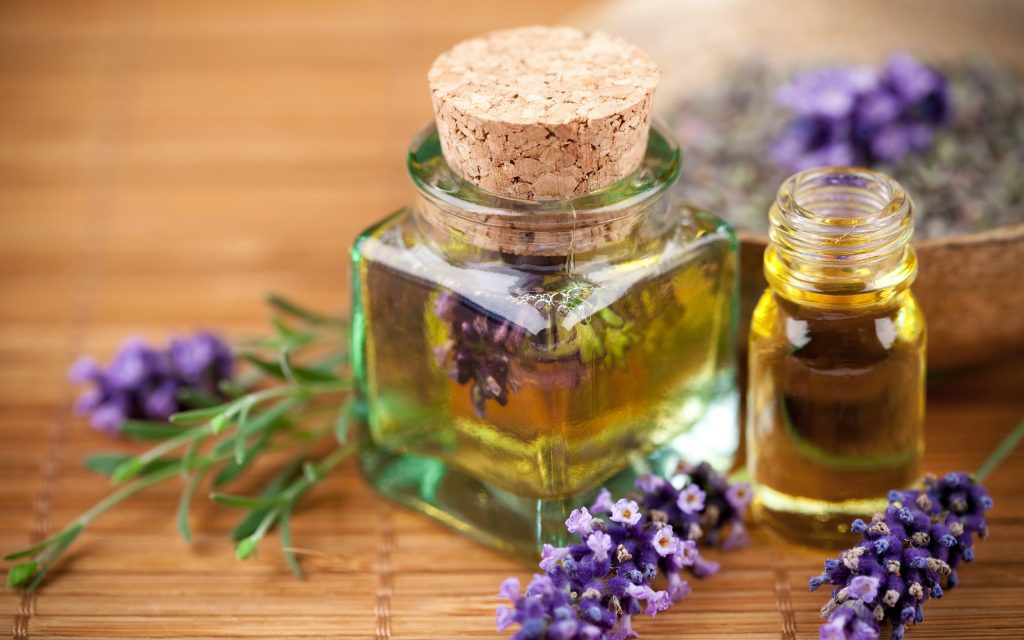
Tea Tree Essential Oil
This is a clear essential oil with a yellow tinge in color. Tea tree oil is one of the best essential oils for yeast infection on the skin with antifungal, antibacterial, antimicrobial, and antiseptic qualities. The oil’s antiseptic quality is active against numerous fungi and bacteria, including some that are resistant to antibiotics. It is a good choice for treating yeast infection and vaginosis. Diluted tea tree oil is effective against trichomoniasis and candidiasis. However, you have to apply the diluted version with daily douches followed by weekly application of tea tree soaked tampons. Even though you can use tea tree oil externally in different forms, you are restricted from using it internally.
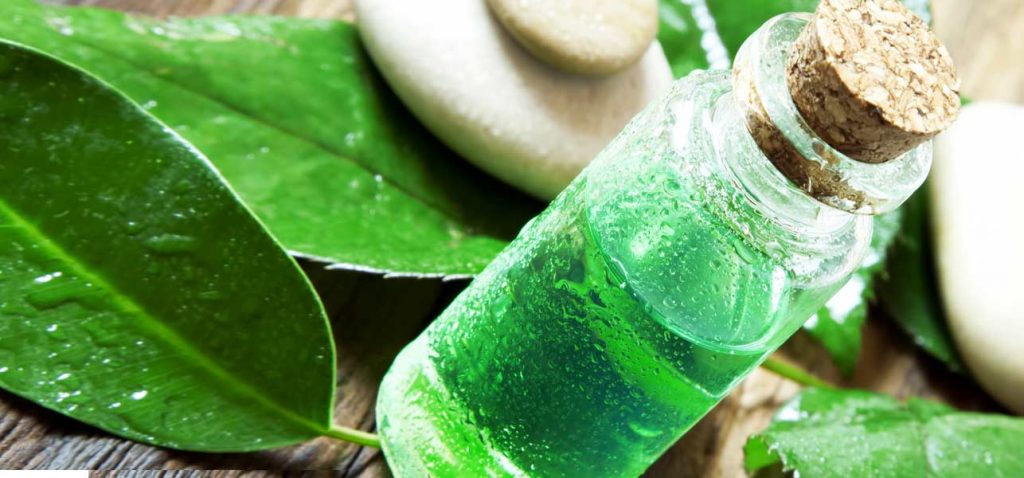
Thyme Essential Oil
This is one of the most effective essential oils for yeast infection on skin. Thymol, which is the main compound, provides it with its antiseptic and fungicidal properties. The antibacterial effects of thyme are helpful against infections. The oil is a strong antifungal agent, and its astringent tannins cause proteins in the skin tissue to form a barrier to infection. However, there are safety concerns associated with thyme essential oil. You should not use this oil if you are pregnant or you have ulcers. You should only apply it topically. Avoid using it internally, since it can cause respiratory arrest, cardiac, convulsions, dizziness, and vomiting. You should consult a medical practitioner if you have any kind of thyroid condition.
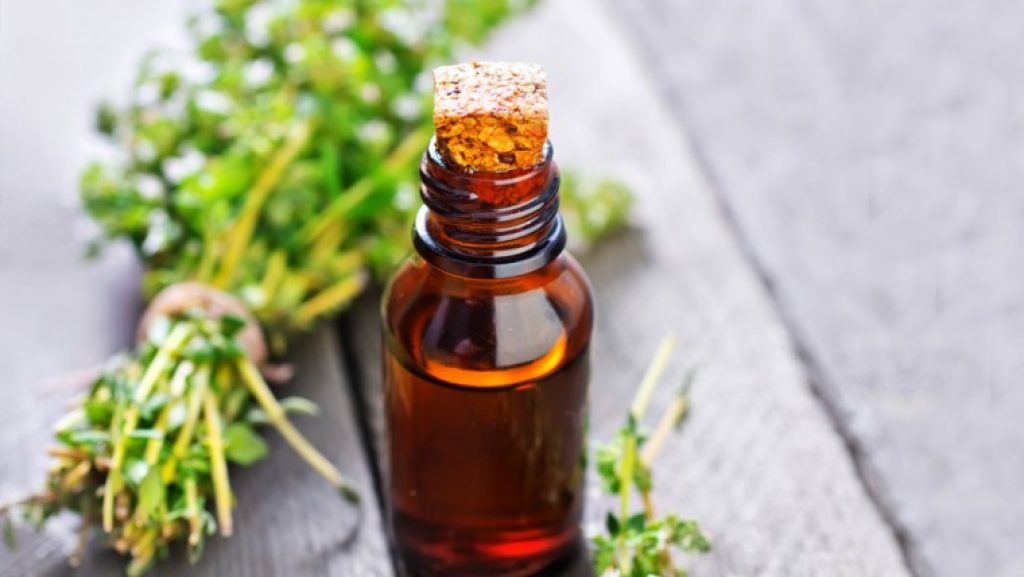
Oregano Essential Oil
This is a golden to dark yellow oil with a sharp, strong medicinal aroma. It is a highly effective antiseptic and antiviral agent. Oregano oil is made up of carvacrol, which is highly antimicrobial. It helps alleviate inflammation on the vaginal lining. Do not use oregano oil without dilution, especially if it contains thymol. However, the one containing carvacrol is considered safe for use when diluted with carrier oil. Make sure you do not exceed the recommended daily dose, which is approximately seventy drops. Pregnant and lactating women should avoid oregano oil or consult a physician or an aromatherapy expert.
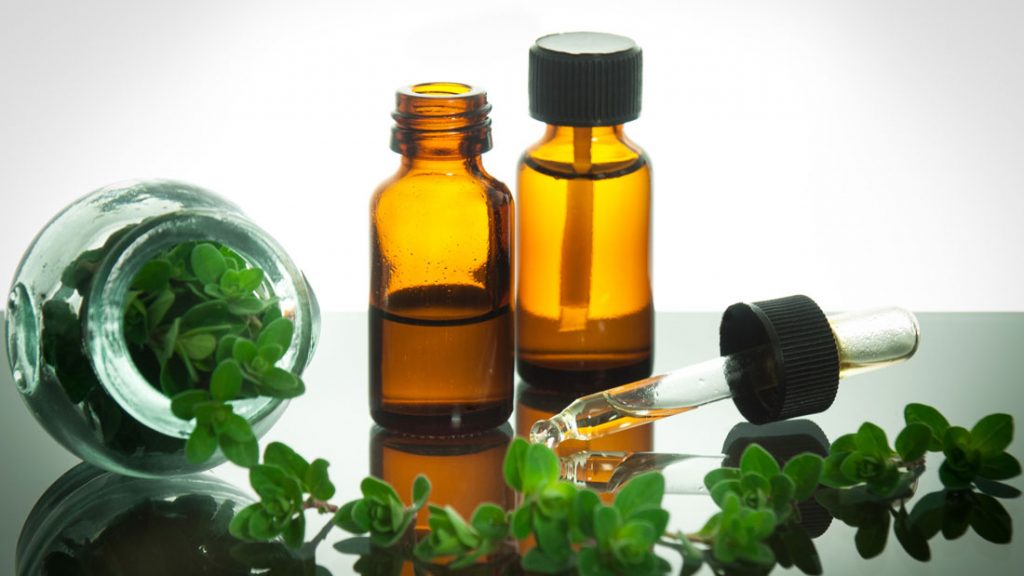
Clove Essential Oil
Essential of clove is antifungal, antimicrobial, and anti-inflammatory. It is made of carvacrol and eugenol. These two elements are very effective for treating yeast vaginitis, bacterial vaginosis, and Trichomonas. According to research, a blend of clove and lemongrass essential oils is efficient for fighting candida. Do not use this oil internally. Pregnant and lactating women should consult an aromatherapy expert. Do not administer clove oil to children under the age of six because it can cause excitement or gastric upset. The oil can cause irritation if used in its pure form. Therefore, diluting it in carrier oil or water is highly recommended.

Lemongrass Essential Oil
This is a yellow to reddish brown oil with a pungent, sharp, lemon-like fragrance. This is highly fungicidal and anti-carcinogenic oil. Apart from its fungicidal properties, lemongrass oil offers analgesic and tranquilizing effects. You can come up with a reliable yeast vaginitis treatment by blending lemongrass with geranium, patchouli, and sandalwood essential oils. The oil successfully counters vaginal yeast infections when used properly. Always dilute it with carrier oil before use.

Vaginal Infections Treatment Recipes
- Yeast Relief Blend
Ingredients:
- 2 cups of warm yarrow tea
- 1 drop of geranium essential oil
- 2 drops of bergamot essential oil
- 2 drops of tea tree essential oil
- 1 drop of lavender essential oil
- 1 drop of chamomile essential oil
- 1 drop of thyme essential oil
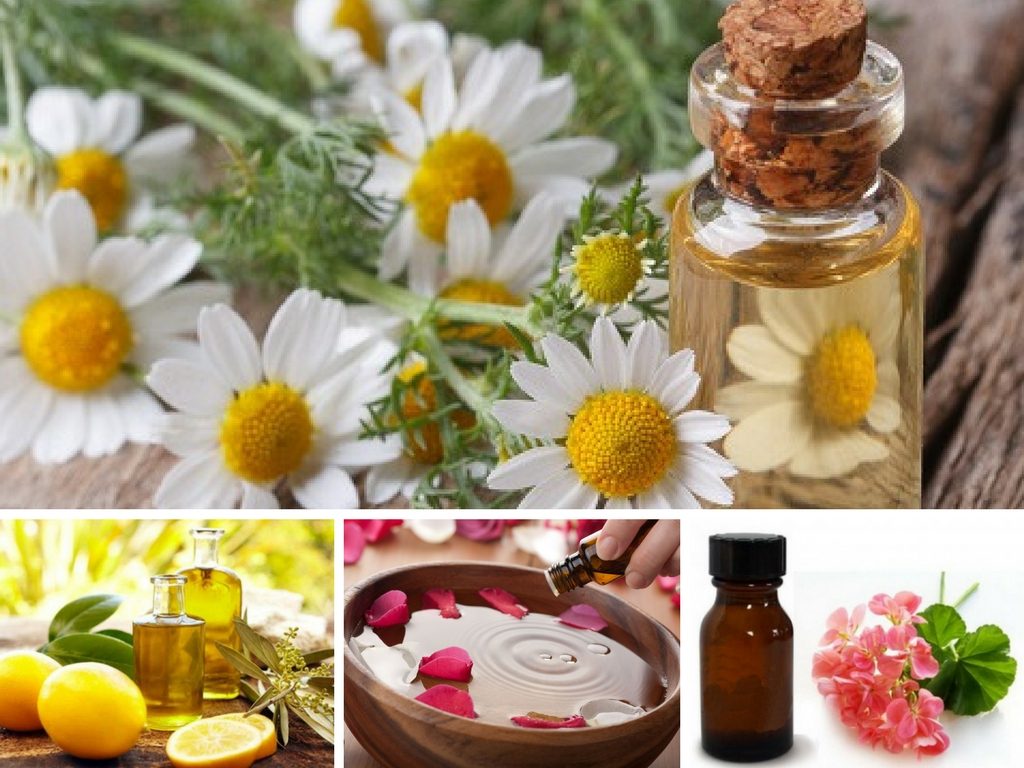
Preparation & Application:
In a clean ceramic bowl, combine all the ingredients. Then use the mixture through douching twice a day.
- Vaginal Health Blend
Ingredients:
- 2 drops of lavender essential oil
- 2 drop of frankincense essential oil
- 2 tablespoon of vegetable oil

Preparation & Application:
In a clean, dark-colored, airtight glass bottle, mix all doTERRA essential oils for yeast infection. Add four drops of the blend to a bath; make sure the bathtub is filled to hip level. Then soak in the tub for fifteen minutes.
- Soothing Blend
Ingredients:
- 4 drops of lavender essential oil
- 2 drops of chamomile essential oil
- 1 drop of peppermint essential oil
- 1 drop of eucalyptus essential oil
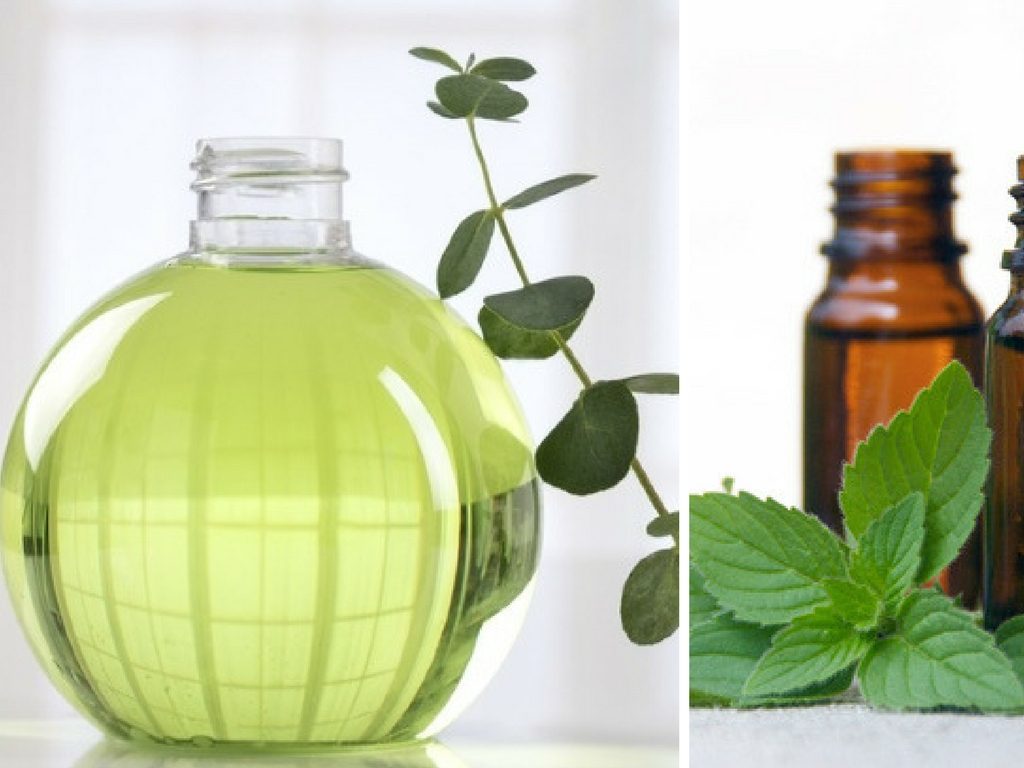
Preparation & Application:
In a clean, airtight, dark-colored glass bottle, add all the ingredients, and stir to mix. Then disperse the mixture in a bathtub full of cool water. Soak your body for fifteen minutes.
- Yeast Healing Bath Blend
Ingredients:
- 3 drops of lavender essential oil
- 1 drop of oregano essential oil
- 2 drops of marjoram essential oil
- 1 drop of vetiver essential oil

Preparation & Application:
Dissolve the doTERRA essential oils for yeast infection in a bathtub filled with warm water. Then soak in the bath for at least ten minutes. Repeat the process as necessary.
- Antifungal Blend
Ingredients:
- 2 drops of tea tree essential oil
- 2 drops of lavender essential oil
- 1 teaspoon of olive oil
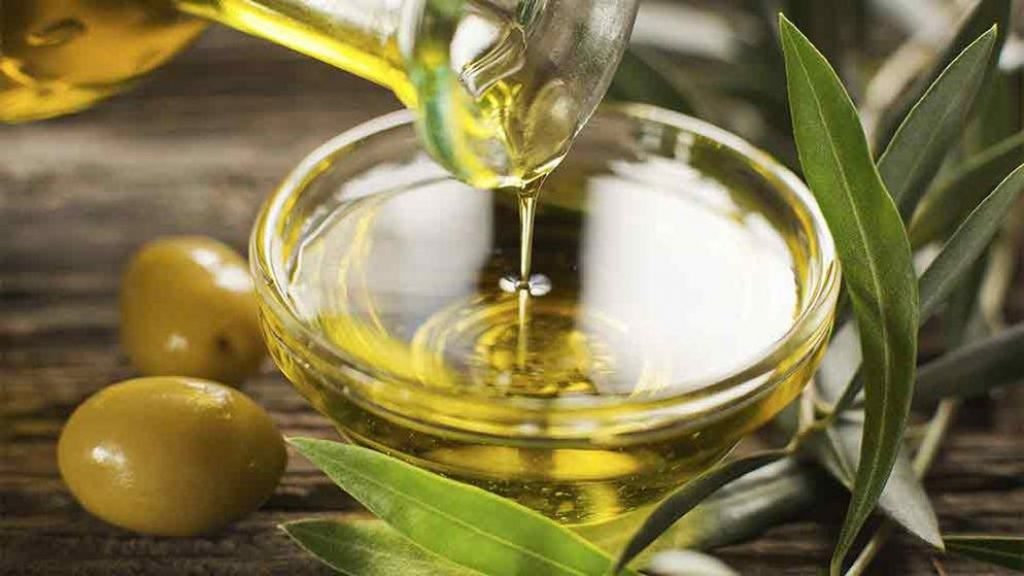
Preparation & Application:
In a clean ceramic bowl, add all the ingredients, and stir to mix. Apply the essential oils treatment for yeast infection to the affected area with the help of your fingertips. Do this twice a day, in the morning and at night before retiring to bed. Wear clean, dry cotton underwear during the day. Repeat the treatment for as long as possible until you heal.
- Antiseptic Blend
Ingredients:
- 3 drops of oregano essential oil
- 1 ounce of olive carrier oil

Preparation & Application:
Pour the olive oil into a ceramic bowl. Then add the oregano oil into the carrier oil, and stir to combine. Transfer the blend into an airtight, dark-colored glass bottle. Use the treatment through douching, and store the bottle in the refrigerator between applications.
- Yeast Treatment Blend
Ingredients:
- 2 drops of lavender essential oil
- 2 drops of tea tree essential oil
- 2 drops of rosemary essential oil
- 2 tablespoons of vinegar
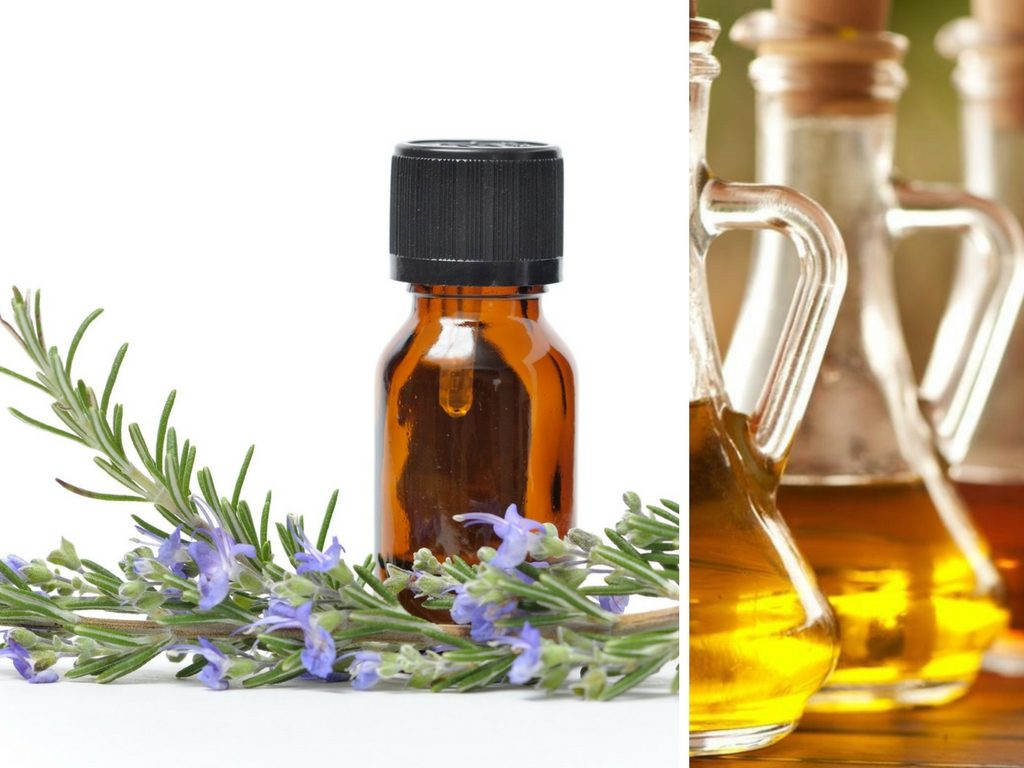
Preparation & Application:
In a clean ceramic bowl, add the ingredients, and stir to blend. Use the essential oils treatment for yeast infection topically by putting it in a douche, and applying to the affected area twice a day.
What about Vaginal Creams, Lotions, and Salves
You can apply a mild salve containing soothing herbs or a soothing cream to alleviate itching, redness, and irritation of the vulva. If you cannot obtain the right product, then consider blending Aloe Vera gel and chamomile cream. However, the use of a salve, lotion, or cream is not recommended if there is a lot of discharge from the infection. You can also add essential oils to a lotion or cream, but avoid creams that contain perfumes or any other synthetic ingredients.
In Conclusion
Vaginal yeast infections are not as simple to cure, and prevent as one would imagine; whether it is yeast vaginitis, bacterial vaginosis, or trichomonas. Aromatherapy has a good record of relieving the discomforts of yeast infections. It is important to know how to identify the symptoms as they manifest, so as you can stop the infection, or at least reduce the severity of the symptoms with the help of essential oils for yeast infection.
Sources and References
- WomensHealth Bacterial vaginosis
- MedlinePlus Yeast Infections
- CDC Genital / vulvovaginal candidiasis (VVC)




